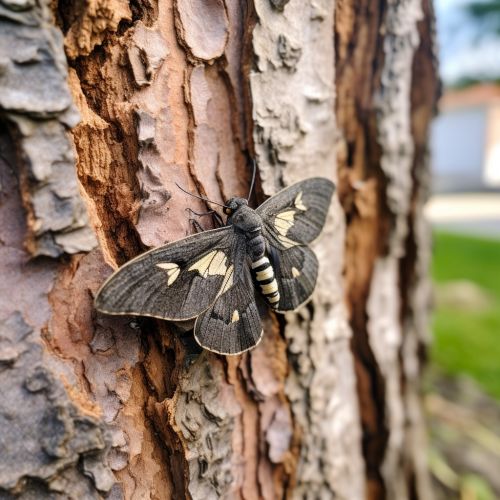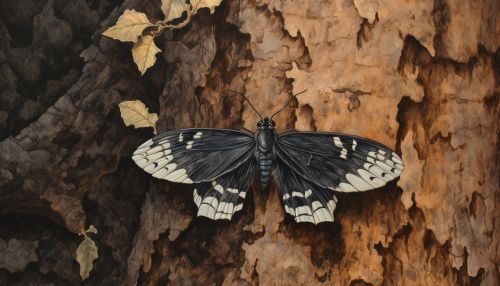Peppered moth
Introduction
The peppered moth (Biston betularia) is a species of temperate moth that belongs to the family Geometridae. It is widely distributed across the Northern Hemisphere, particularly in Europe and North America. The moth is renowned for its significant role in the study of natural selection, due to its rapid evolutionary response to industrial pollution.
Description
The peppered moth is a medium-sized moth with a wingspan ranging from 35 to 60 millimeters. It exhibits two primary color forms: typica, the light-colored form, and carbonaria, the dark-colored form. The light form is speckled with small dark spots, giving it a 'peppered' appearance, hence the common name of the species. The dark form, on the other hand, is almost entirely black, with only a few light spots.


Life Cycle
The life cycle of the peppered moth consists of four stages: egg, larva (caterpillar), pupa, and adult. The female moth lays eggs on the bark of trees or on nearby vegetation. The eggs hatch into caterpillars, which feed on the leaves of a variety of trees and shrubs. After several weeks of feeding and growth, the caterpillar forms a cocoon and pupates. The adult moth emerges from the pupa after two weeks.
Habitat and Distribution
Peppered moths inhabit a wide range of habitats, including forests, woodlands, and urban areas. They are primarily nocturnal and spend the day resting on tree trunks or under small branches. The species is distributed across the Northern Hemisphere, with populations in Europe, North America, and Asia.
Role in the Study of Natural Selection
The peppered moth is best known for its role in the study of natural selection. In the mid-19th century, British scientist Henry W. Bates observed a shift in the population of peppered moths in industrial areas of England. The proportion of dark-colored moths increased significantly, while the light-colored form became less common. This phenomenon, known as 'industrial melanism', was later explained by the theory of natural selection. The dark-colored moths were better camouflaged against the soot-covered trees in industrial areas, making them less likely to be preyed upon by birds. This gave them a survival advantage, leading to an increase in their numbers.
Conservation Status
The peppered moth is not currently considered to be at risk of extinction. However, changes in its habitat due to urbanization and deforestation could potentially impact its populations in the future. Conservation efforts are focused on preserving its natural habitats and monitoring its population trends.
